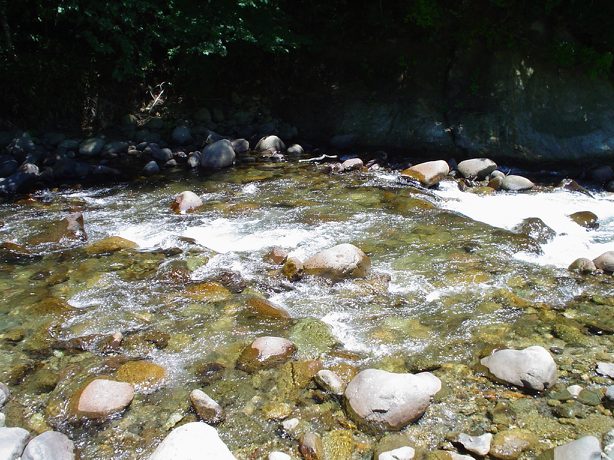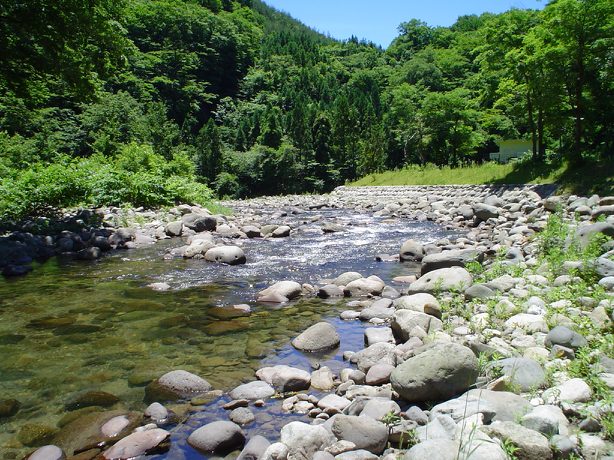
Japanese Research Publications CV |
||
 |
Hideyuki Doi JSPS Research Fellow for abroad E-mail: hdoi(at)icbm.de |
|
|
I moved to ICBM, Carl-von-Ossietzky University Oldenburg,
Germany
|
||
Institute
for Chemistry and
Biology of the Marine Environment (ICBM), Carl-von-Ossietzky University
Oldenburg, Schleusenstrasse 12, D-26382 Wilhelmshaven, Germany
E-mail: hdoi(at)icbm.de Tel: +49 4421 944 102 Fax: +49 4421 944 199 Lab. web site: http://www.icbm.de/planktologie/en/ |
||
| Current Research |
||
|
My
current research focuses on ecology, especially food
webs
and
material transports in aquatic ecosystems.
1) Aquatic food webs Spatial patterns of food webs and material cyclings in aquatic ecosystems, Food web analysis using multiple stable isotopes, Isotopic changes in phytoplankton, benthic microalgae and invertebrates in their phytosynthesis and assimilation. 2) Prey-predator and host-parasite interactions Habitat use of aquatic insect grazers, Microalgal communities and grazers interaction, Interactions between snail and trematode parasites 3) Climate change effects on phenology Recent climate changes and the phenological timings of the organisms, Match-mismatching in trophic interactions by recent climate change Lake ecosystems Food-chain length in ponds: Food-chain length (FCL) in ecosystems has been studied extensively, and numerous hypotheses to predict FCL, productivity, ecosystem size, and productive space have been proposed. We estimated FCL in 15 ponds using stable isotope techniques to test the most common hypotheses for predicting FCL. We also measured total productivity, pond volume (ecosystem size), and edible microalgal carbon (resource availability) in each pond. We found that productive-space (edible carbon + pond volume) was the best model to predict FCL. Therefore, our results suggest that both resource availability and ecosystem size predict FCL in pond ecosystems and play significant roles in maintaining longer FCLs (Doi et al. 2008 Oikos). Simple acidic lake ecosystem: Lake Katanuma is a volcanic, strongly acidic lake (average pH of 2.2), located in Miyagi, Japan. Only a few species are found in Lake Katanuma (Shikano et al. 2004 L&O, Takagi et al. 2005 Hydrobiologia). The deposit feeders inevitably assimilate food from different origins in a selective manner from SOM, including benthic and planktonic microalgae. We conducted the feeding experiments to determine the required parameters for the mixing model. The results clearly showed that the deposit feeding chironomid larvae selectively assimilated phytoplankton and benthic diatoms as fresh deposits from bulk sediments, and assimilated phytoplankton more readily than benthic diatoms (Doi et al. 2006 BAE, Doi et al. 2007, RCM). Carbon isotope values of the benthic diatoms varied seasonally, while those of phytoplantkon, indicating that dissolved inorganic carbon was more frequently limited for the benthic diatoms than the phytoplantkon, due to the algal mat of diatoms (Doi et al. 2003, AME, MFR). The fluctuations in the nitrogen stable isotope ratio of the planktonic green algae were surveyed by short interval sampling during a spring blooming in Lake Katanuma (see photo), suggesting that NH4+ is a major determinant of the nitrogen stable isotope ratio of phytoplankton (Doi et al. 2004, AME). Inland saline Lake Chany: Lake Chany is located in Siberia, Russia and is an enclosed water body. In this study, we investigated spatial differences in the pelagic food web structure in different parts of this lake, especially at an estuarine transition zone between an inflowing river and the lake (Doi et al. 2006 Hydrobiologia). Both sulfate-sulfur and nitrogen isotope compositions of the POM increase with distance from the estuary into the Lake Chany complex. Heavier sulfur and nitrogen isotope recycling from the sediment, caused by microbial sulfate reduction and denitrification, respectively (Doi et al. 2004, Hydrobiologia). 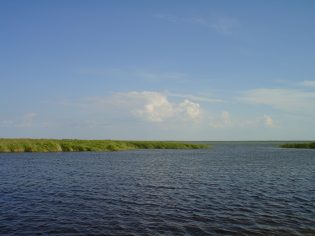 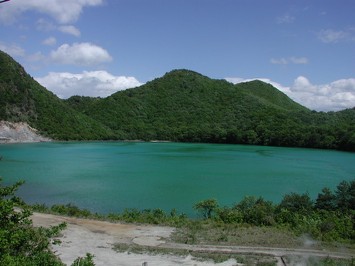
Stream ecosystems Dam-reservoir system can subsidize the downstream food webs and alter community strucure of macroinvertebrates. We estimated the subsidization using IsoSource mixing model by carbon and nitrogen isotopes. Along with the distance from the dam, the subsidy effects on the food webs decreased and changes in macroinvertebrate community, especially filter-feeding gourps (Doi et al. 2008 Oecologia). Reach-scale effects of canopy cover on trophic pathways to a net spinning filter-feeder and a grazer were investigated using carbon and nitrogen isotopes in the Kamo River, a mountain stream in Kyoto, Japan. The results indicated that the main food sources of the grazer and the filter-feeder were derived from the in-situ benthic algal source at open reaches and from the terrestrial source at canopy covered reaches (Doi et al. 2007 MFR). In a headwater stream, we estimated the contribution of chemoautotrophic production to freshwater snails in a headwater stream using carbon, nitrogen, and surfur isotopes (Doi et al. 2006, 2007, Inter Rev Hydro). 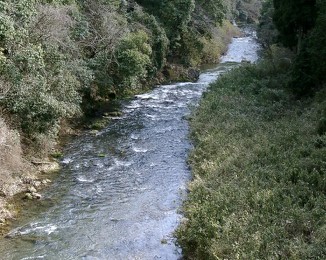 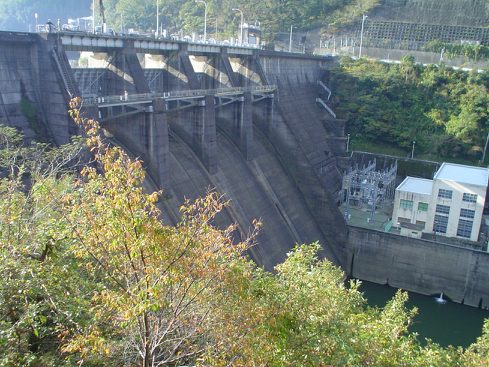 Estuarine and marine ecosystems Estuarine food web: We carried out carbon and nitrogen stable isotope analyses on estuarine macrozoobenthos in order to examine relationships between their feeding habits (feeding mode and food selectivity) and the spatial shifts in food sources from upstream to downstream in an estuary. These results show that species-specific feeding habits should be considered when evaluating the roles of macrozoobenthos in regulating estuarine material flows (Doi et al. 2005, ECSS). We performed comparisons of food sources among different gastropod species on sub-tropical and temperate tidal flats (26° and 38°N, respectively), and used isotope mixing models using carbon and nitrogen stable isotopes. A mixing model for stable isotopes, IsoSource, revealed that main food sources for three snails were macroalgae (50-56%) and seagrass (39-45%) at temperate site. At the sub-tropical site, snails fed mainly on macroalgae. It would thus appear that macroalgae and seagrass play an important role in the food webs not only in their own habitats but also on the adjacent tidal flats (Doi et al. 2008 JMBA). Coastal food web:In coastal areas, aquaculture has accelerated in recent decades, and attached algae and invertebrates proliferate on the farming cages. We hypothesized that the attached algae on the farm structures is important to planktonic food webs. Our results show that attached microalgae from sea farms are important food sources for planktonic food webs in areas with fish farms and that the two food webs, attached and pelagic, are coupled through zooplankton grazing (Doi et al. 2008 MEPS). We estimate two food source compositions for the cultured pearl oyster using stable isotope and stomach contents analysis in the coastal areas of the Uwa Sea, Japan. The results indicated that the oyster feed on a mixture of phytoplankton and attached microalgae on farm structures, and that the attached microalgae on pearl cages can serve as an important food source for them as well as phytoplankton (Fukumori et al. 2008a ECSS). The carbon and nitrogen isotope values in tissue of the oyster and their gut contents was examined as a baseline indicator for isotope composition. The results showed oysters are long-term integrators of isotope ratios from their diet and carbon isotope signature of oysters can serve as a more accurate bioindicator of isotopic baselines than nitrogen for marine ecological study (Fukumori et al. 2008b ECSS). 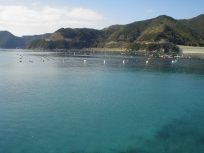
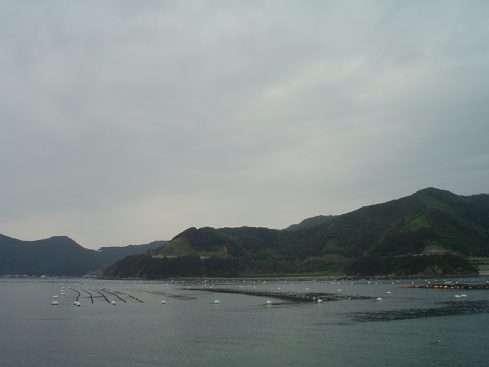 Habitat use by grazers: We hypothesized that the abundance of microalgae mediated the habitat-use behavior of aquatic insect grazers in stream ecosystems. Our results showed that a significantly greater number of the insect grazers were attracted to thin and thick algal mats than to the untreated ceramic plate. Thus, the insect grazers can recognize and respond to the abundance of microalgae through microalgal cues, which induce the movement of the insect grazers to habitats with high microalgal biomass (Doi et al. 2006, BAE). Grazer-periphyton interactions: We examined the larval population of a caddisfly grazer and the abundance and community structures of periphyton at segment scale throughout the grazer’s life cycle. This study implied that the grazing of caddisfly larvae would regulate abundance of periphyton in a riffle, and also regulate the abundance and community structure of periphyton at the segment scale with the expansion of their longitudinal distribution (Katano et al. 2007 Limnology). We attempted to detect differences in the patterns of top-down effects of herbivores among multiple spatial scales in a stream ecosystem. The relationship patterns between the insect grazer and periphyton were detected more clearly at larger scales than at smaller scales. Since specific interactions between Glossosoma larvae and periphyton may occur at a microhabitat scale, we considered multiple spatial scaling to understand the top-down effect of herbivores (Doi and Katano 2008 J-NABS). Isotope technique
for host-parasite interactions: To estimate isotopic changes
caused by trematode parasites within a host, we investigated changes in
the carbon and nitrogen isotope ratios of the freshwater snail Lymnaea
stagnalis infected by trematode larvae. The nitrogen isotope values of the
hepatopancreas was significantly higher in
infected than in uninfected snails. The 15N enrichment in
the
hepatopancreas of infected snails is caused by the higher 15N
ratio in
parasite tissues (Doi et al. 2008 JP).
3) Climate change effects on phenology
Winter flowering phenology: Winter
flowering is likely influenced by the recent climate changes, however,
previous phenological analyses have not focused on flowering phenology
in winter. In Japan, the Japanese apricot historically flowers
during the cold months of the winter from January to March. Using
JMA dataset of the flowering date of 32 sites in various
regions of Japan from 1953 to 2005, the
flowering date of apricots has been advanced, with a notable shift in
regimes between 1953-1989 and 1990-2005. Winter flowering of Japanese
apricot has been influenced by recent climate changes, especially by
drastic climate-related shifts in the timing of key processes (Doi 2007 CR).
Budburst and climate change: Leaf budburst phenological timing of plants is important to grow, since the early budburst timing extends the growth period of the plant. We estimated the effect of climate change on the budburst phenological timing of four trees in Japan. Budburst dates advanced during 1953-2005 only in those localities with an increase of temperatures during spring. Therefore, climate change has shifted budburst phenology in Japan with the increase of spring temperatures (Doi and Katano 2008 AFM). Intra-annual climatic changes for phenology: Flowering of cherry tree tended to occur earlier over the last three decades, whereas the appearance of the butterfly was delayed. The effects of climate and the timing of the sensitive period differ between both trophic levels. The plants were strongly affected by temperature 30–40 days prior to flowering, whereas the butterfly was less affected by temperature, and the effects mainly occurred during the 15 days prior to its appearance. The phenologies of the plants and butterfly are changing in opposite directions because they use different climatic cues with different temporal trends (Doi, Gordo and Katano 2008 CR). Latitudinal patterns in phenological responses of plants: We hypothesized that the phenological response of plants varied with latitude. To test the hypothesis, we estimated the phenological response to long-term climate change using autumn events of phenology were delayed by recent climate change. Our results showed that the single regression slopes of the phenological responses at lower latitude were larger than those at higher latitudes. We found the negative relationships between the leaf phenological responsiveness and the latitude. The findings would be important to predict the phenological timing with global climate changes (Doi and Takahashi 2008 GEB). Delayed phenological timing of dragonfly emergence: The appearance of the first adult dragonfly has significantly shifted to later in the spring in the past five decades. Increased summer and autumn temperatures may provide longer bivoltine periods and a faster growth rate; thus the second generation, which previously hatched in summer, can emerge in the autumn, causing the size of the population of dragonflies that emerges in spring to decrease. It is also possible that reduced dragonfly populations along with human development are responsible for a delay in the first observed dragonflies (Doi 2008 Biol. Let). 
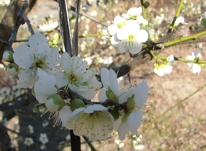 Ongoing studies In
LAFWEDY, Ehime Univ.
We are studying the biodiversity and ecosystem functions of the ponds in a mountain to reveal the relationships between biodiversity and ecosystem functions such as the food web length and the material flow of microbial loop. We are studying the trophic coupling between dam-reservoir system and the downstream to estimate the reservoir effects on the food webs and material flow of the downstream along with the distance from the dam (Collaborated with Aqua Restoration Research Center). 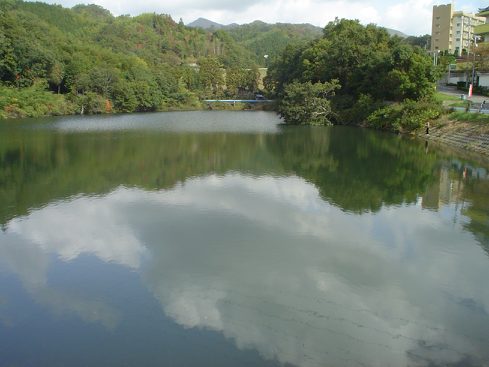
 In
University of Washington
We are studying the
benthic food webs in the streams and lakes in Alaksa using carbon
and nitrogen stable isotopes to estimate the habitat coupling between
stream and lake ecosystems along with the sockeye salmon density as
marine derived nutrients.
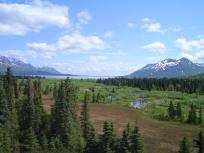
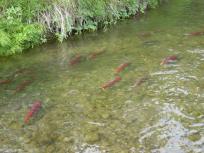 |
||
